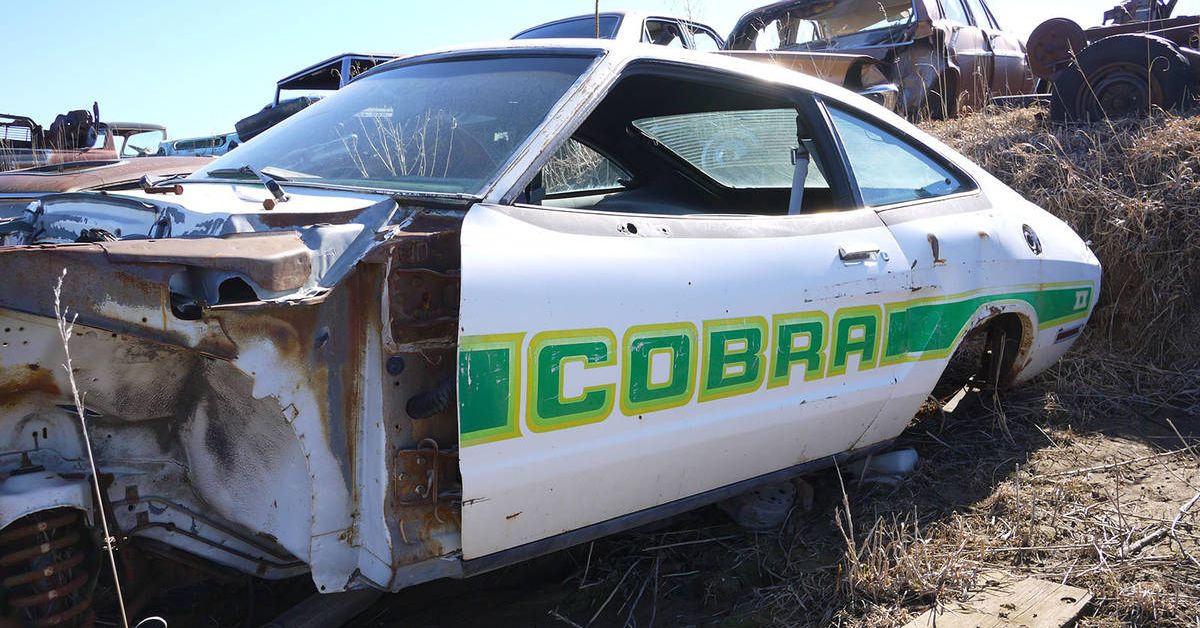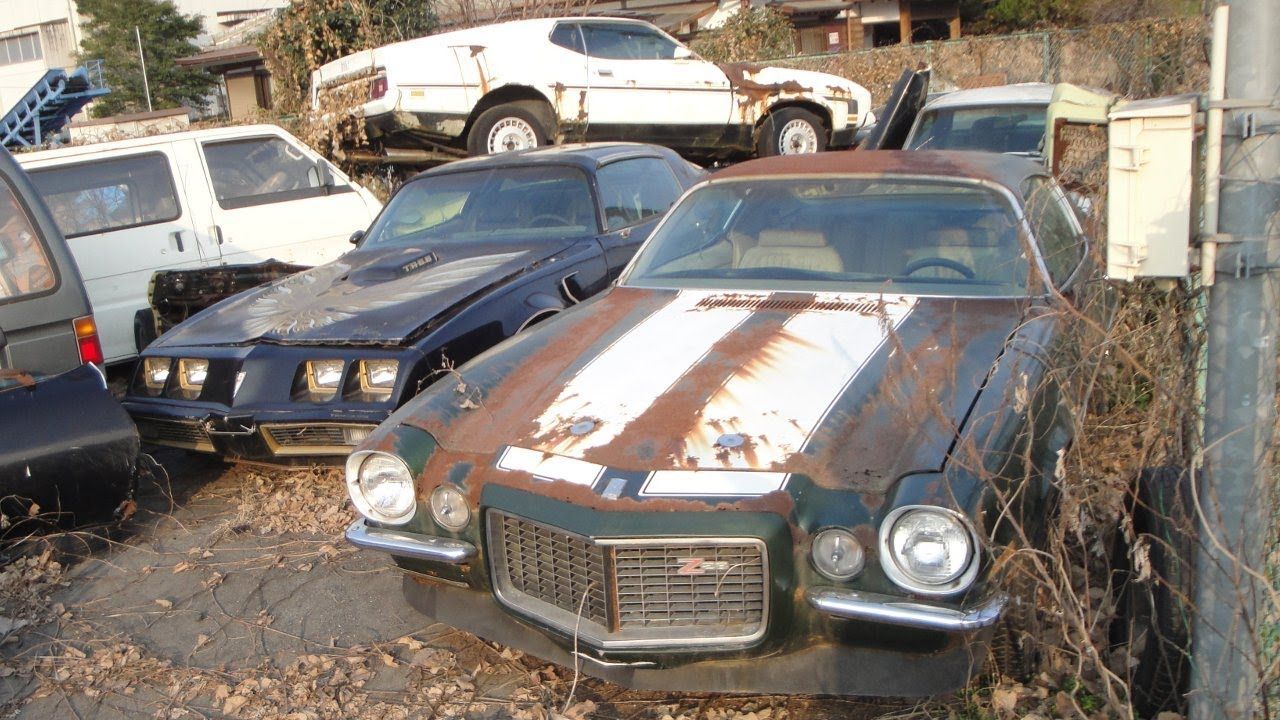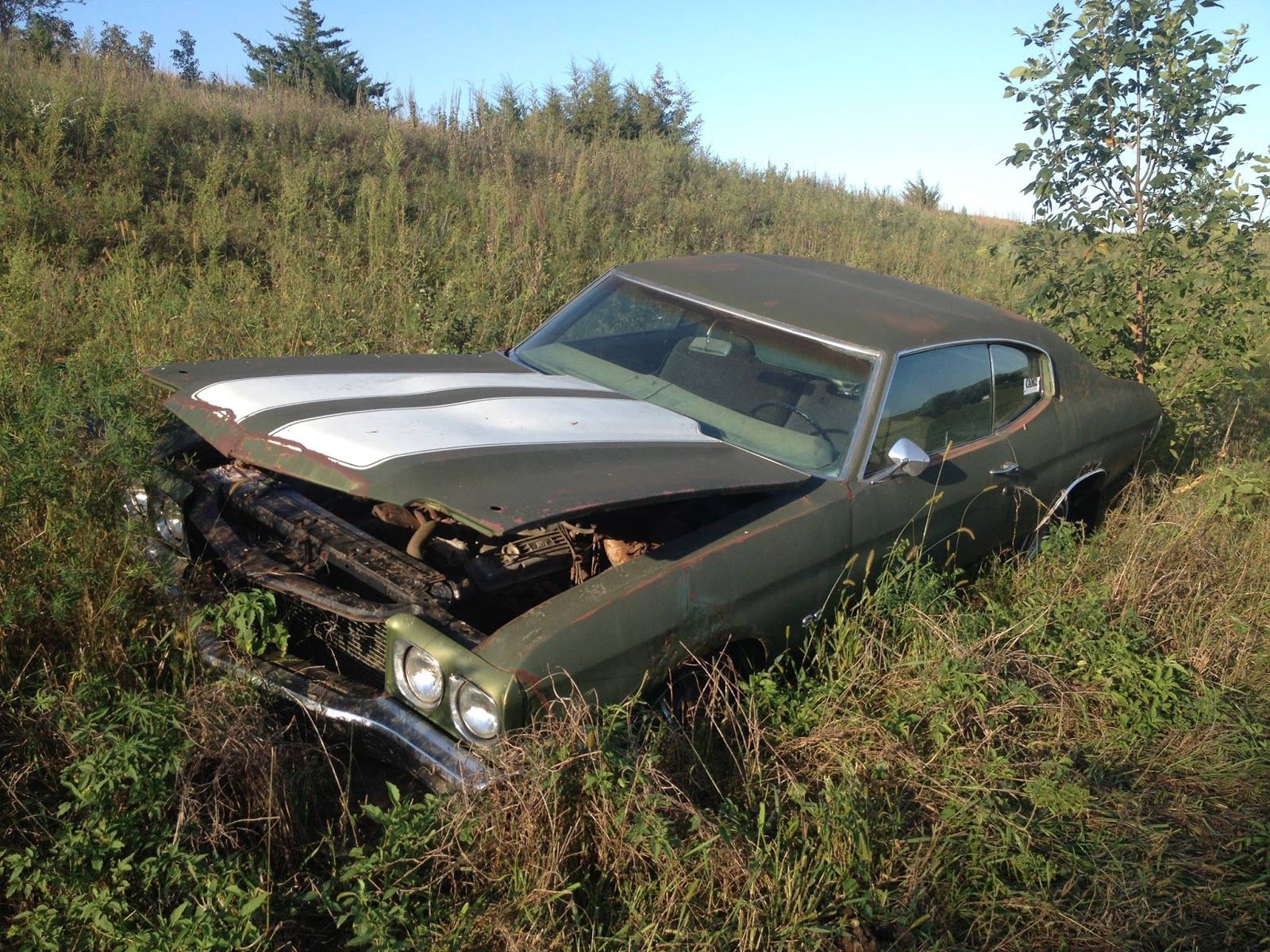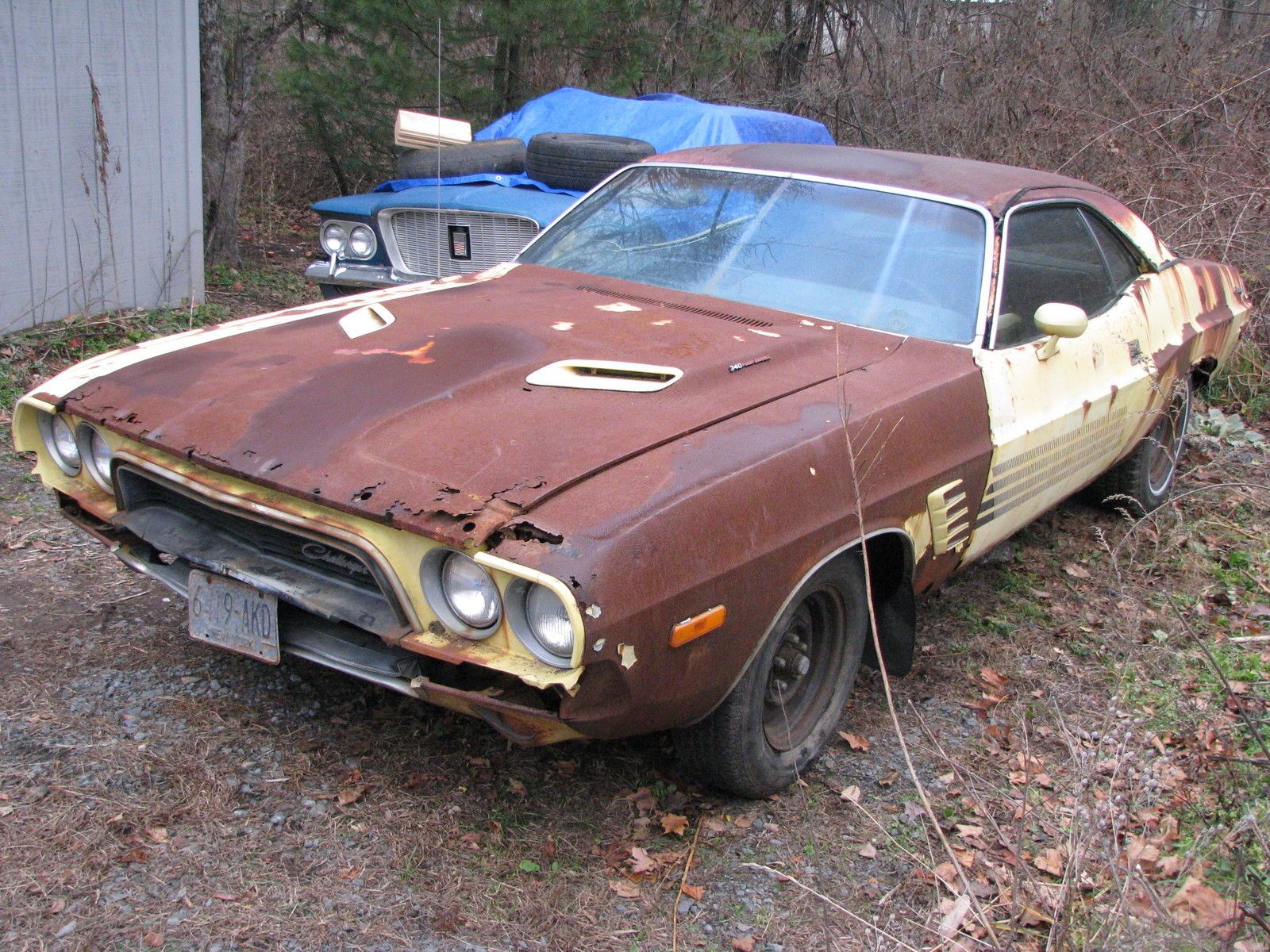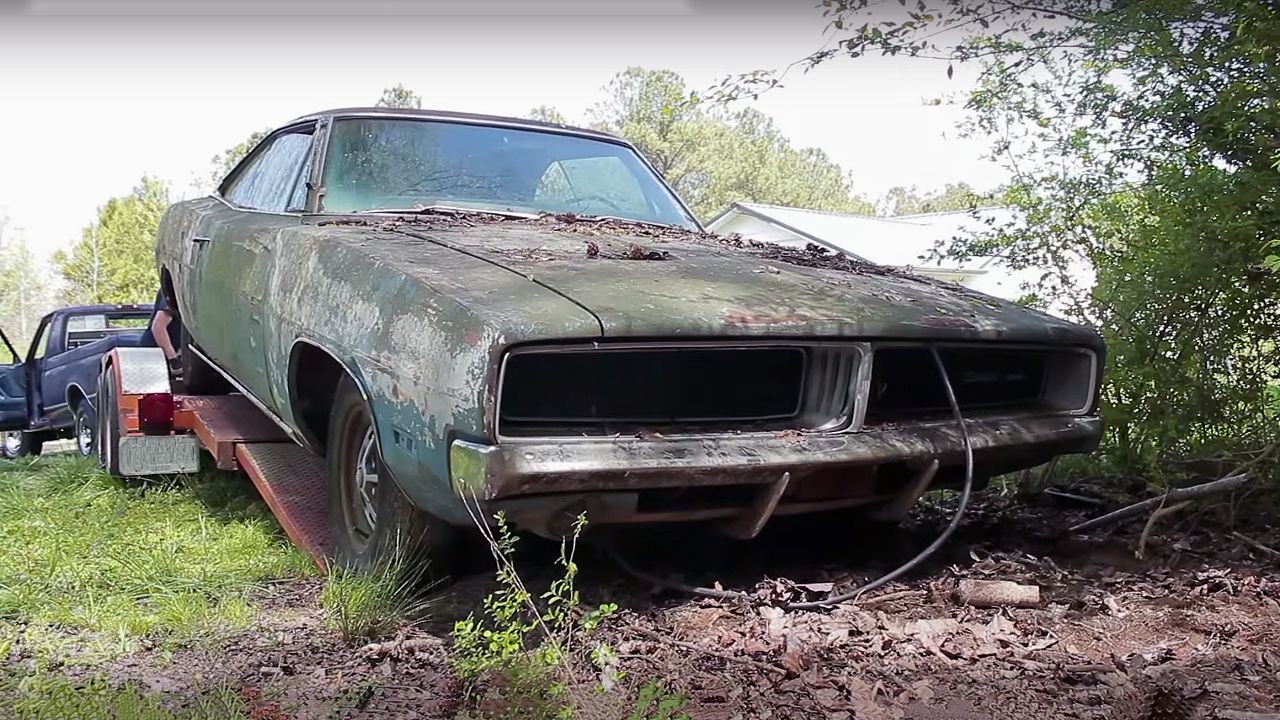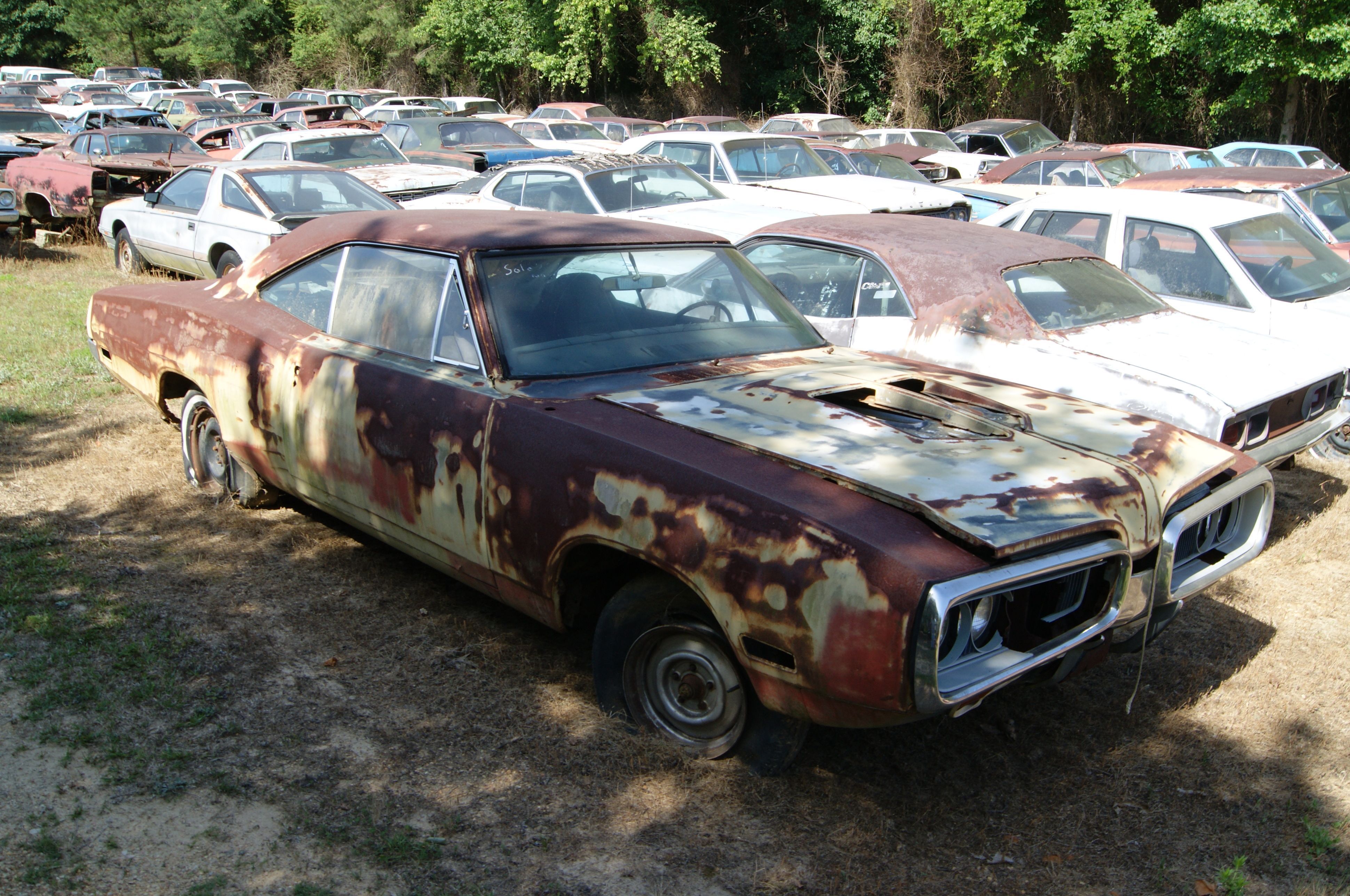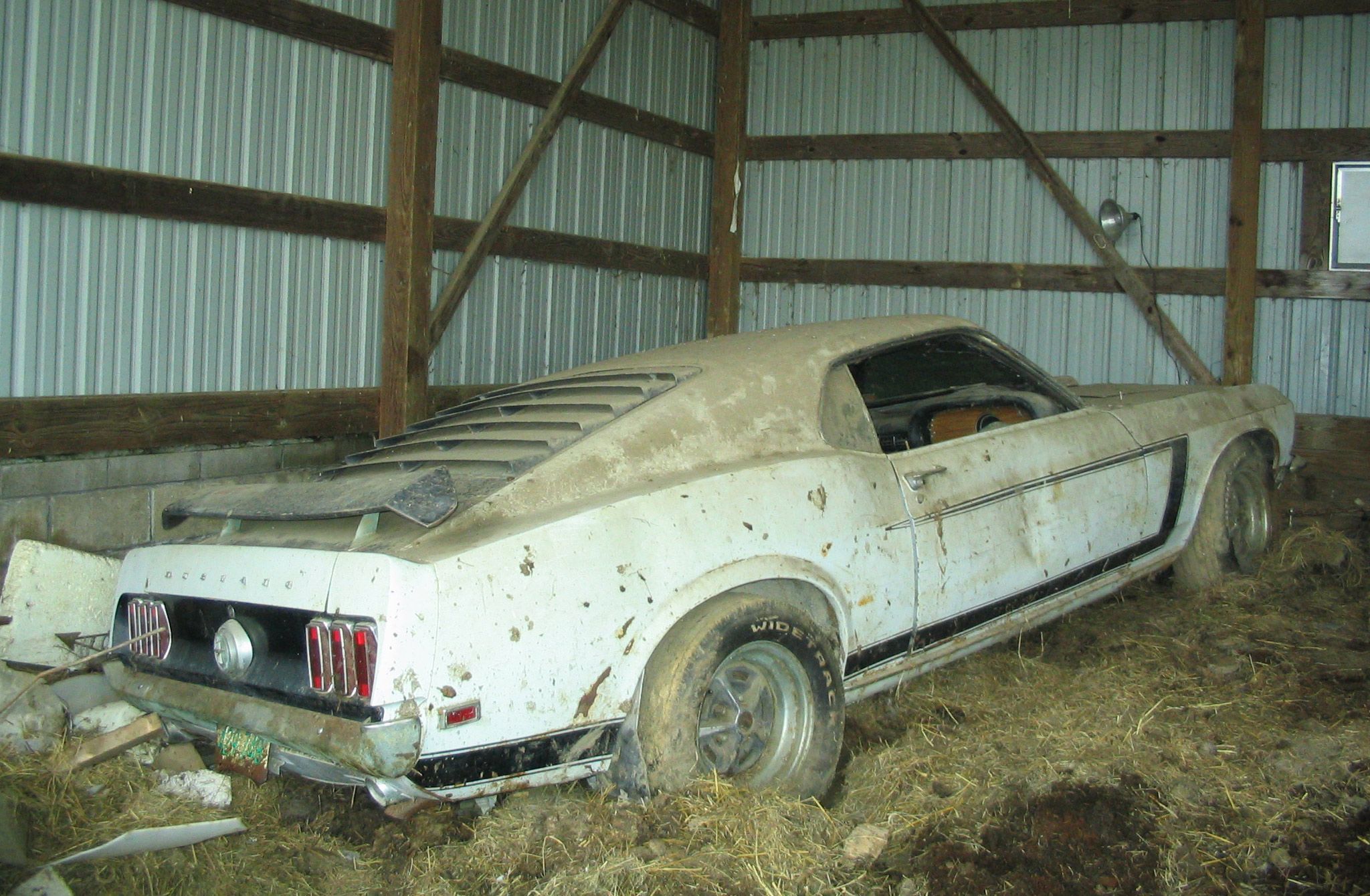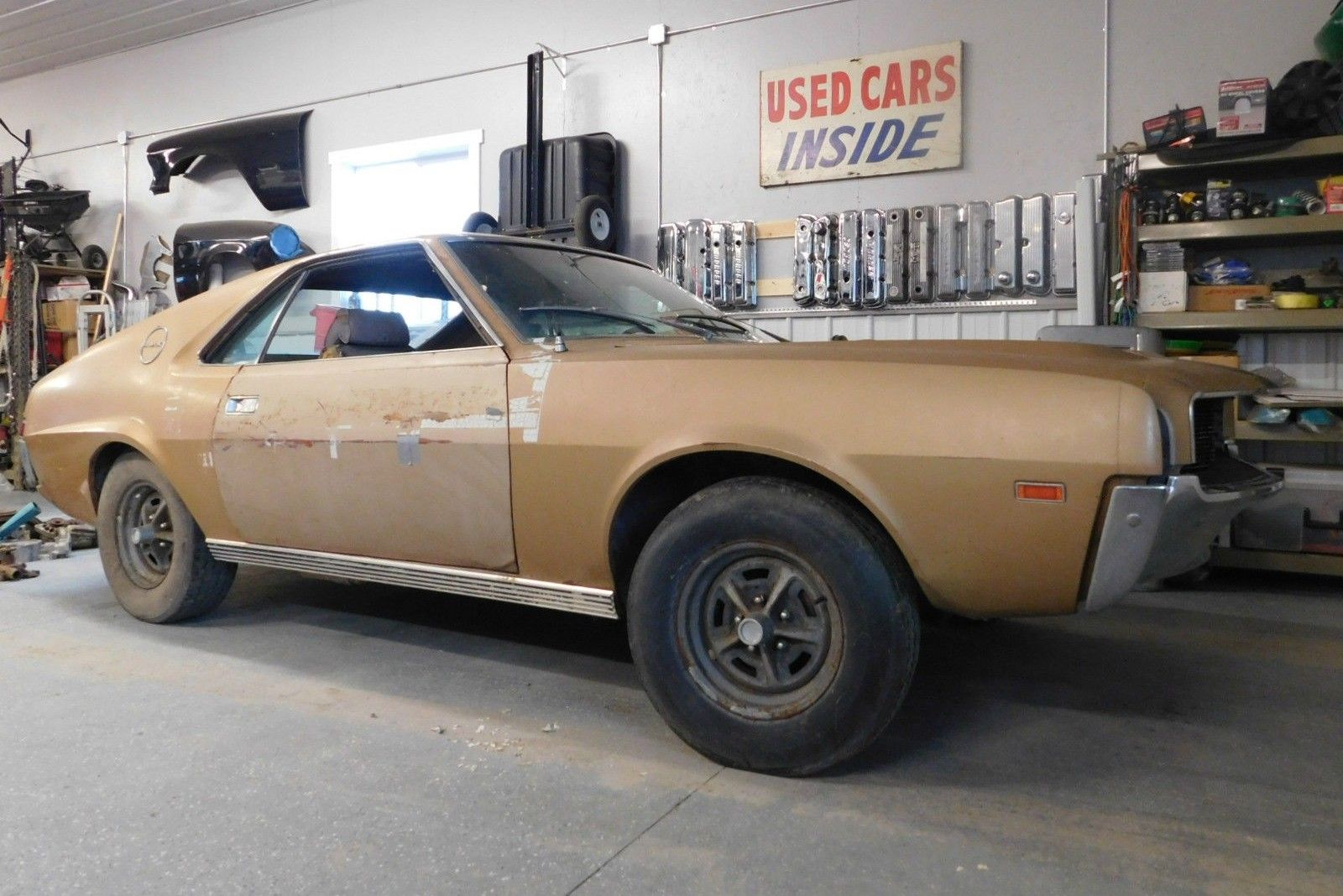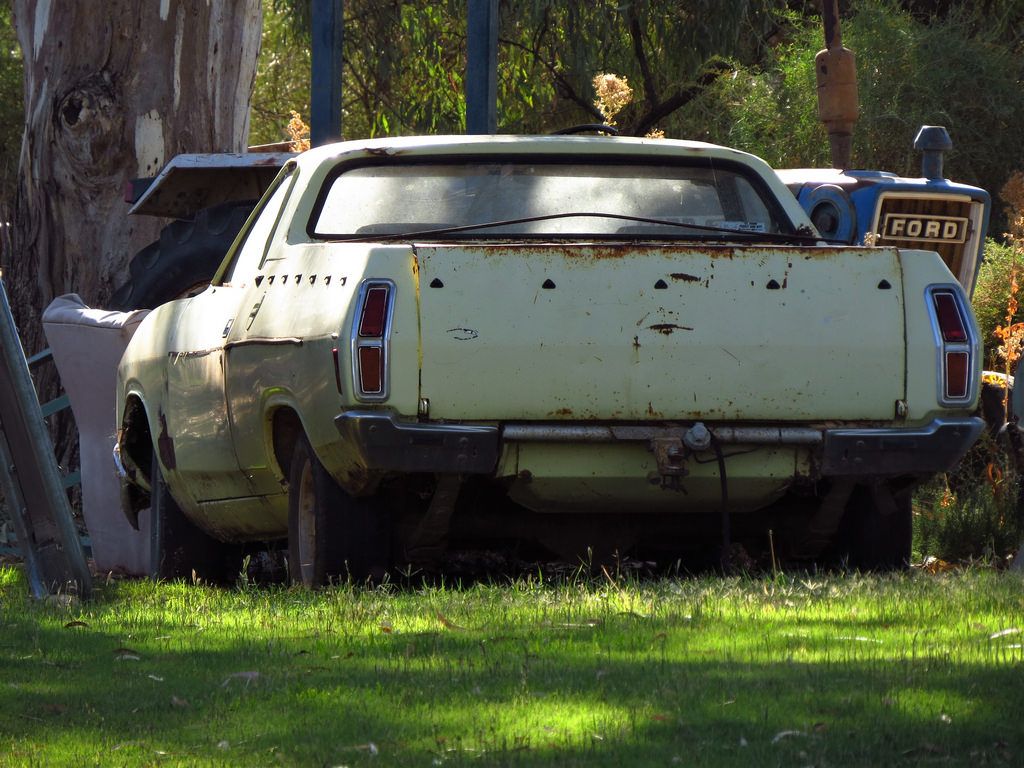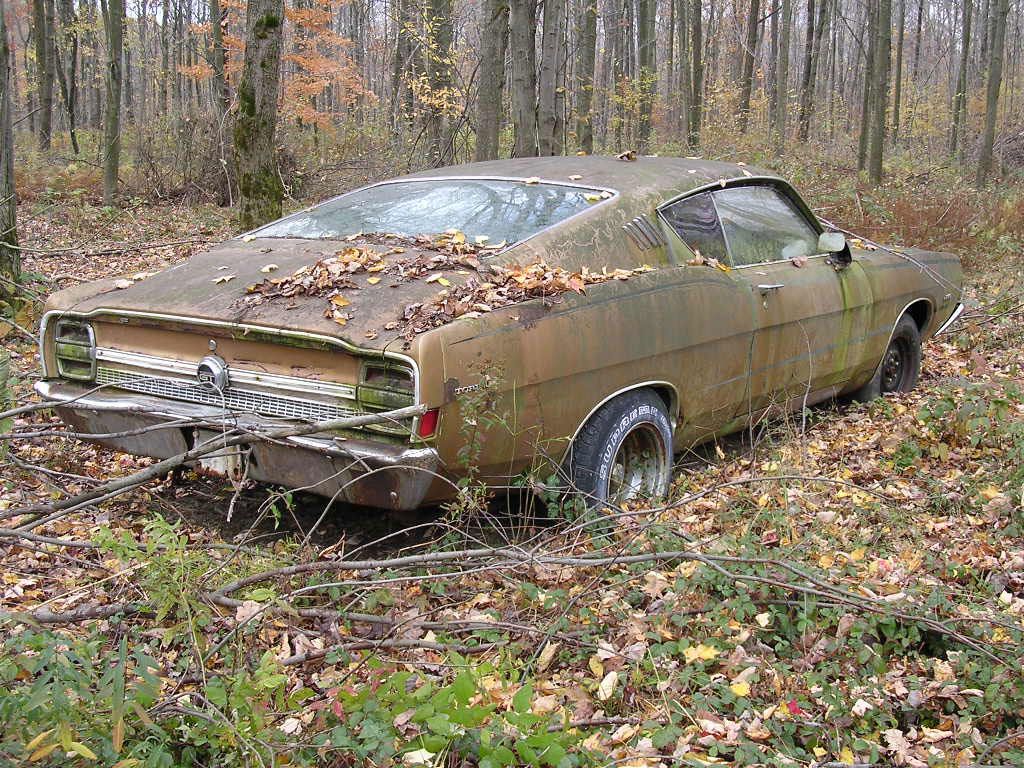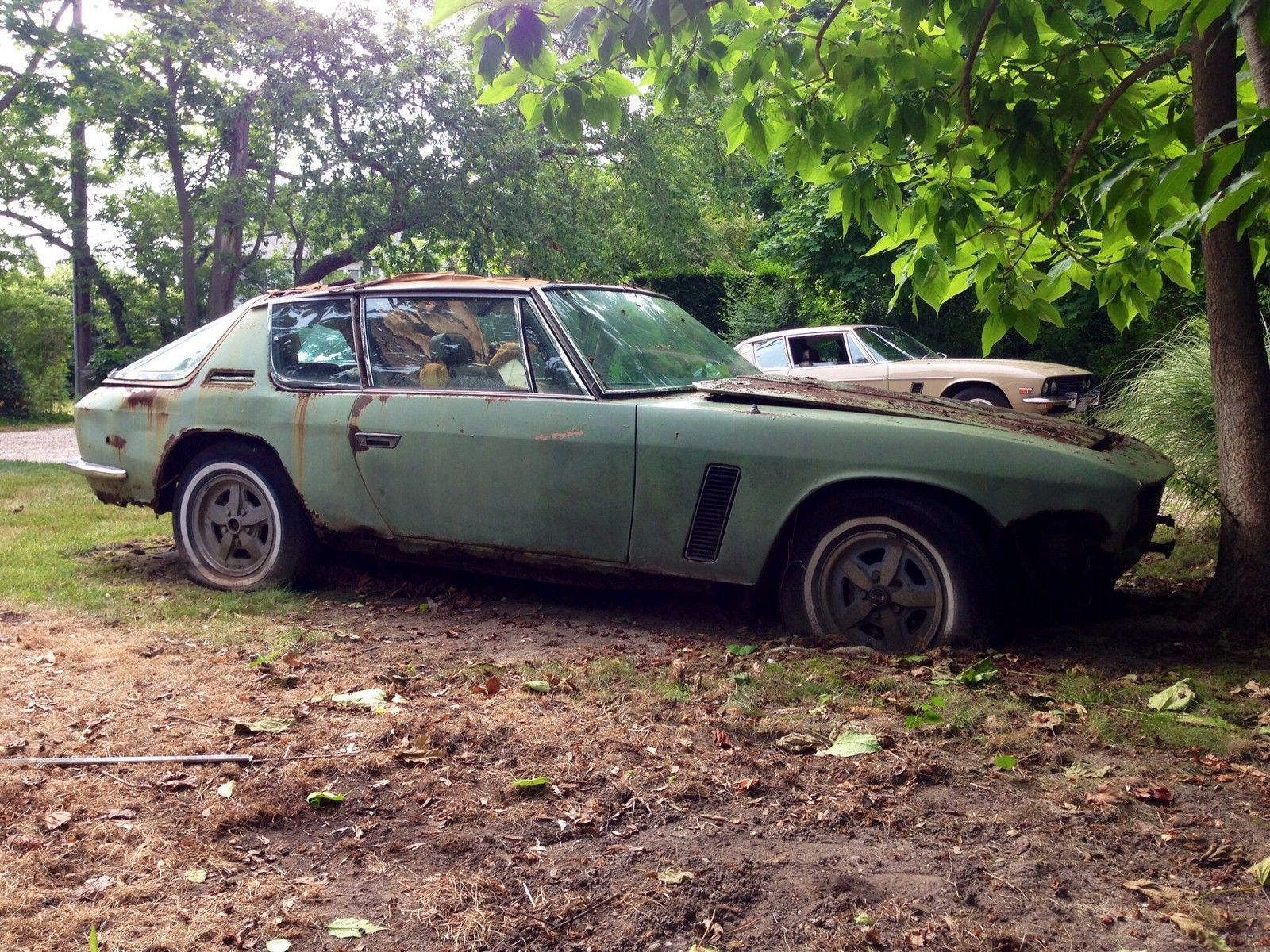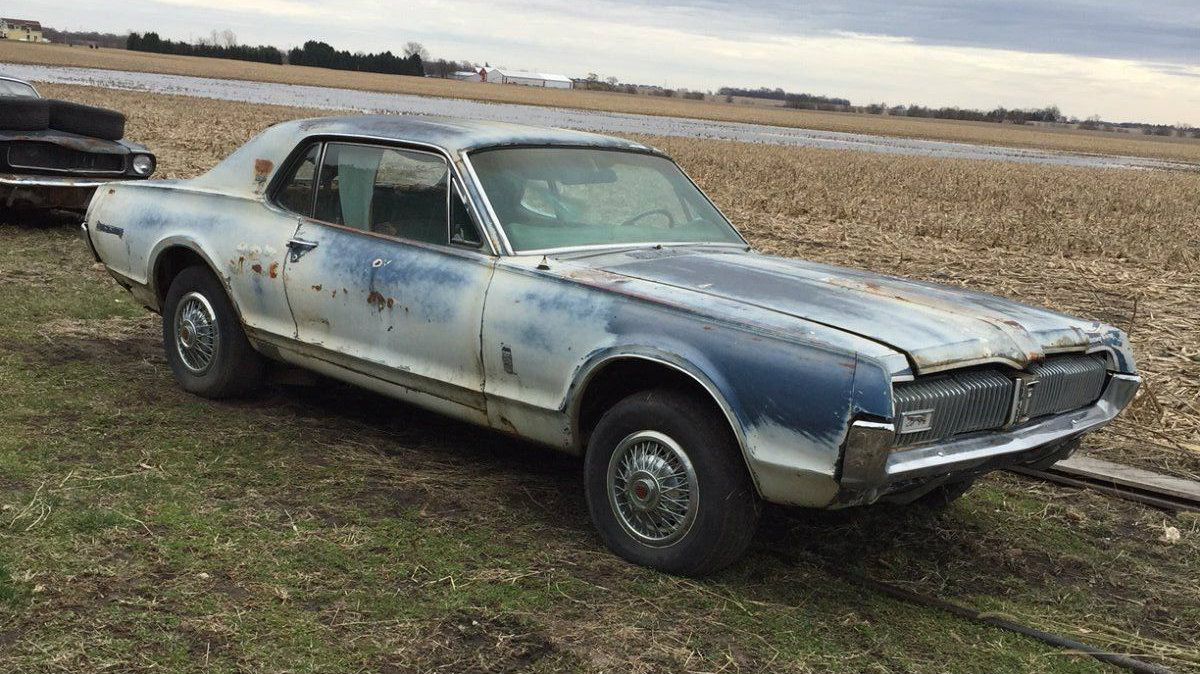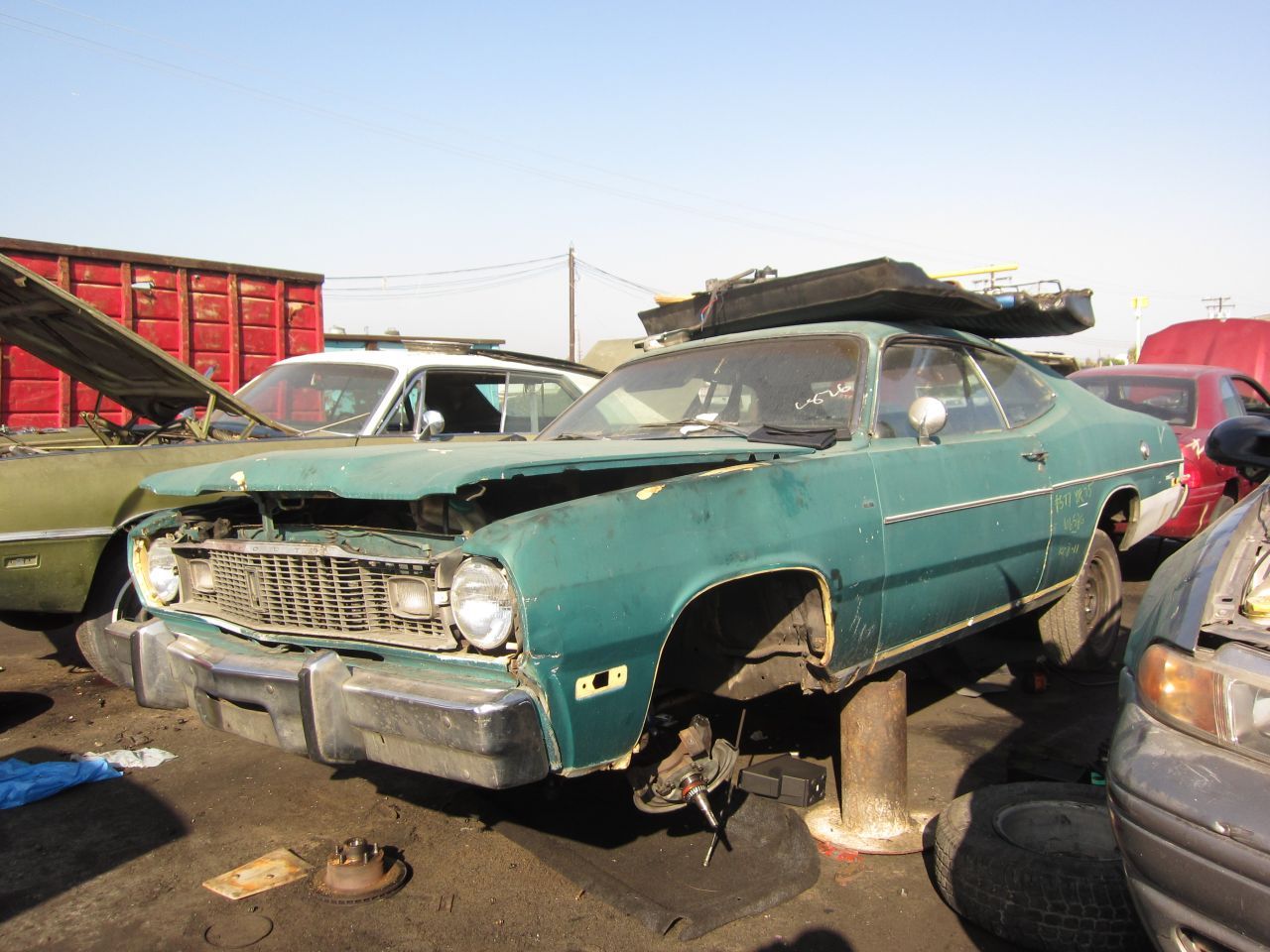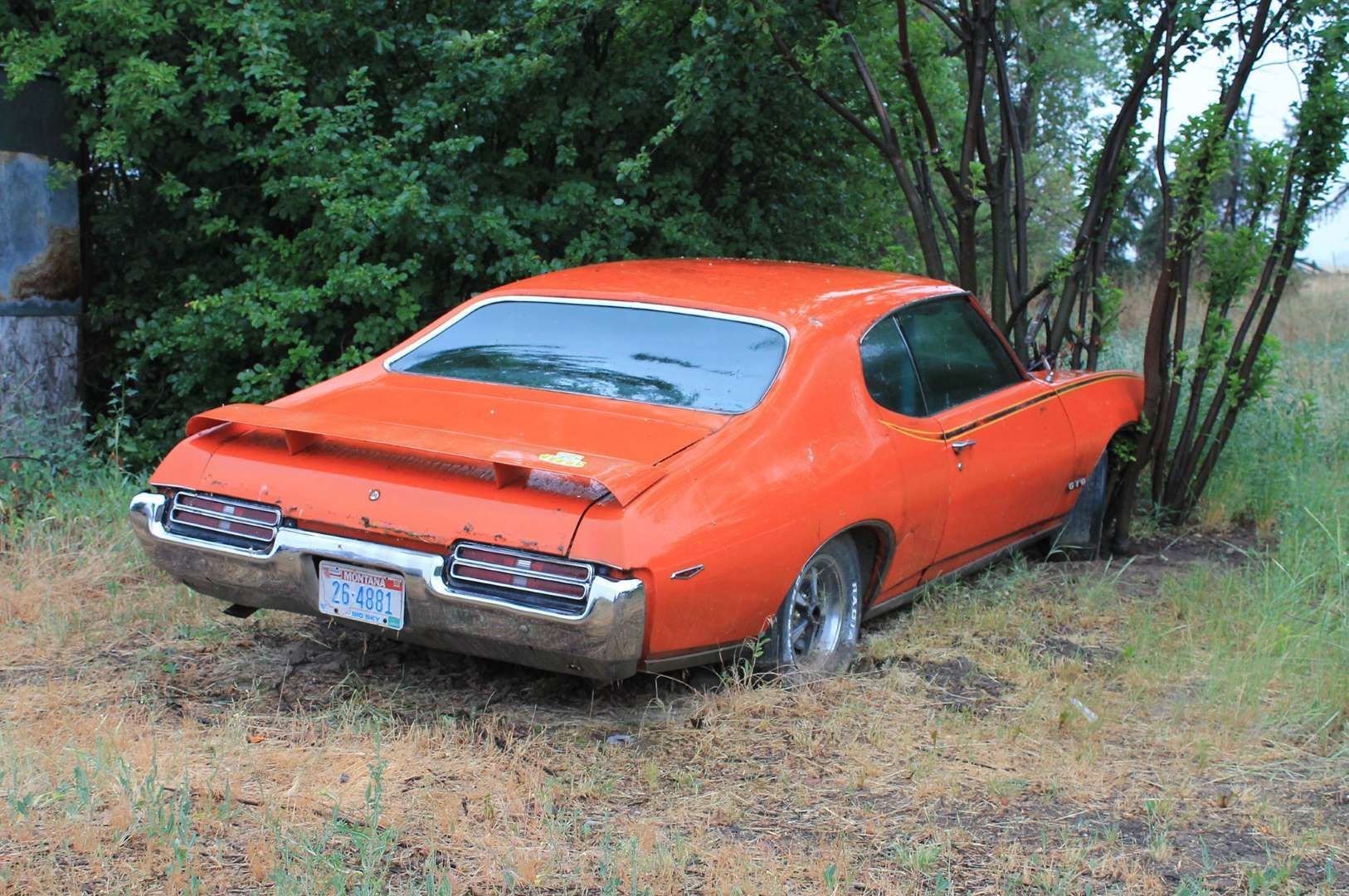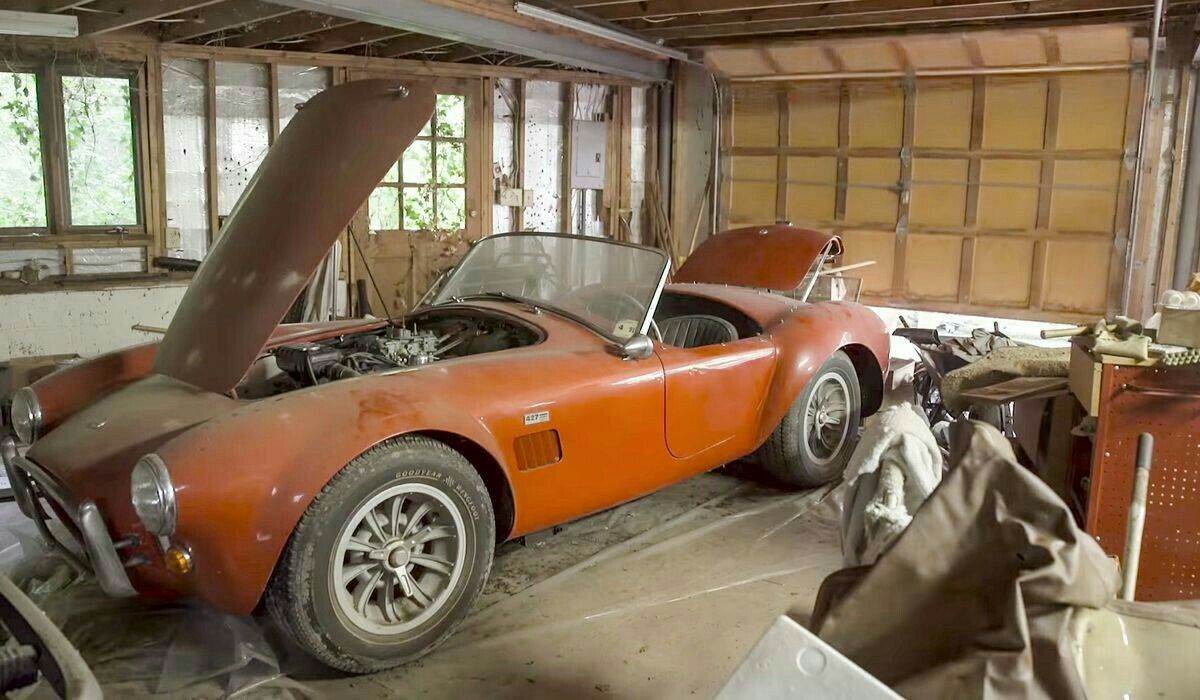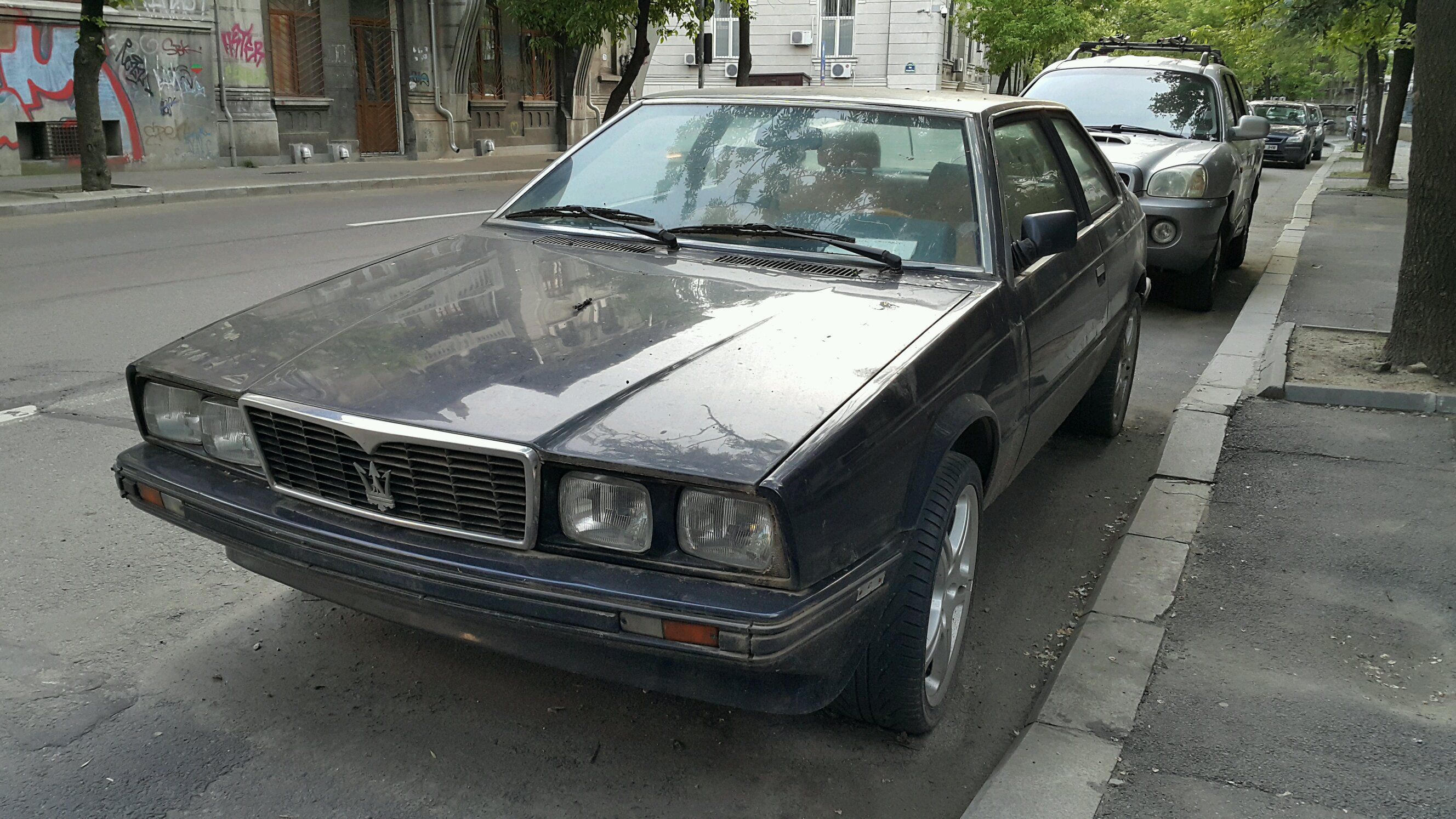The muscle car is an iconoclast, synonymous with our national identity: cut a fuel line on a Mustang, and it’ll probably bleed red, white, and blue. I suppose that’s what make the following pictures so morbidly fascinating. They form a pretty evocative image: Captain America’s shield split in half, the Statue of Liberty buried to its neck in the surf, that sort of thing.
In any case, one thing they all these neglected vehicles have in common is their ability to weave a narrative depicting our wanton waste: cars aren’t cheap to manufacture or buy, so who’s leaving all these hunks of metal to rot? I mean, come on, I’m sure most of their former owners would have been better off having their vehicles recycled or repaired, which has the added benefit of keeping pollutants from leaching into our earth or disturbing local wildlife.
Things get even more confusing when you realize that the entries on this list probably weren’t bought for practical reasons: no one buys a fuel-guzzling, tire-shredding monster without getting a little bit attached to it. After all, these aren’t the rusted-out Dodge Neons that form the local flora of trailer parks. People must have been proud to own these machines at one point in their lives, which makes this list all the sadder: they’re glimpses into more adventurous lives.
15 Chevrolet Camaro Z/28
The stereotypical final resting place of a rotted-out muscle car is usually some farm in the Midwest, which is probably warranted: after all, it’s not like Chevrolet was moving Camaros by the bucket-load in overseas markets.
However, this exceedingly rare split-bumper Z/28 model, able to fetch anywhere between $20,000 and $60,000 at auction, somehow found itself living out its final years in Japan.
More specifically, Kurume City on Kyushu island, which has gained a small bit of notoriety in recent years thanks to its status as a dumping ground for all manner of weird and wonderful machinery. The spot comes courtesy of the "WasabiCars" channel on Youtube, which chronicles any interesting or unusual cars prowling the streets of Japan.
14 Chevrolet Chevelle SS
Never quite garnering the same mainstream attention as its smaller Camaro sibling, the Chevrolet Chevelle was a muscle car for the more distinguished, reserved customer, one who needed a bit more practicality than what the Bow-Tie’s Mustang competitor could offer at the time.
Of course, that’s all relative: every Chevelle SS came with racing stripes, a variety of optional colors, all of them loud, and an exhaust note righteous enough to open the gates of Valhalla. This olive-green example, almost camouflaged by the surrounding greenery, is a 1970 SS 396 model. In spite of the name, that meant a 402 ci (6.6 liter) big block V8 sending anywhere between 330 hp to 375 hp to the rear axle.
13 Dodge Challenger
History tends to cast a gentler eye on the original, pre-facelift version of the first-generation Dodge Challenger: that car’s basically a cultural mainstay, forging its outlaw reputation in films like Vanishing Point and, later, Quentin Tarantino’s Death Proof.
The post-facelift model, introduced in 1972 with a frumpy front fascia, never quite garnered the same amount of star power as its lantern-jawed predecessor.
Another possible cause for the Challenger’s departure from the limelight might have something to do with its blunted performance: due to an industry-wide switch to lead-free gasoline, combined with rising gas prices and insurance rates, Dodge had to cut down the car’s range of V8 engines, leaving the 340 ci, 275 hp LA-series V8 as the most potent engine on offer until 1974. That fall from grace might explain why this 1972 model was left to rot for more than 20 years, according to the former New York-based owner.
12 Dodge Charger SE
The blurriness between the ‘pony car’ and ‘muscle car’ genres means that I find it difficult to consider the Ford Mustang to be the definitive example of the latter breed. Instead, I’d bestow that honor upon the B-body Dodge Charger, a menacing slab of Detroit iron that’s every bit as iconic as the aforementioned Mustang or the Chevrolet Corvette. That’s what makes the fact that this 1969 model was left to rot for over two decades without being driven all the more puzzling.
This SE model packs an appropriately macho engine under the hood: 383 cubic inches worth of orange-painted Magnum V8 engine. From the factory, that big-block pumped out 335 hp and a colossal 425 lb ft of torque, sent to the rear axle through a four-speed A-833 manual transmission.
11 Dodge Coronet Super Bee
While the Charger and Challenger soak up the public’s adulation, the Dodge Coronet Super Bee remains one of my favorite pieces of Detroit iron, which means that this neglected example makes me far angrier than it should. It broke muscle car tradition by eschewing the traditional rectangular slot front grille, opting instead to go for a unique front end treatment Dodge referred to as “bumblebee wings.”
While the Super Bee’s styling might not have been to everyone’s taste (sales were far lower than its more conservatively styled predecessor), its performance was never called into question.
Featuring stiffened suspension, stickier tires, a bulletproof Mopar A-833 four-speed manual transmission, and an optional 440 ci big-block V8 fitted with three two-barrel Holley carburetors, good for 390 hp and 490 lb ft of torque.
10 Ford Mustang Boss 302
While it was never quite delivered the same straight-line potency as the Boss 429 or Mach 1 Mustangs, the Boss 302 is the closest you can get to feeling like Parnelli Jones in the red-hot crucible of Trans Am racing. The stripped out, viciously uncompromising 302 was a true-blue homologation special, complete with a competition-ready 5.0 liter small block V8, better optimized to run at high RPM for extended lengths of time. Further cementing its legendary status was its functional yet aggressive exterior, yet another career success for renowned Japanese-American car designer Larry Shinoda. What sequence of events led to this prototype being left in a barn is anyone’s guess.
9 AMC AMX
This country has produced many an industry titan, but AMC simply isn’t among them. That’s in spite of machines like the AMX, which regularly find themselves on lists ranking underrated or underrepresented members of the muscle car genre. For what it’s worth, I agree: the AMX deserves to be remembered by more enthusiasts.
Pairing an extremely compact footprint to a not-so-compact engine was a niche not exactly popular with domestic brands back in the 1960s, as most muscle cars of the era tended to be bigger and heavier: for comparison’s sake, a first-generation Camaro was nearly 10 inches longer and 200 lbs fatter. That’s a pretty safe formula for a brutally quick car, especially top-range models like the one in the above photo, found gathering dust in a barn in North Dakota: they came equipped with 390 ci V8s pumping out 315 hp.
8 Ford Falcon Ute
The ute is an Australian icon, rooted deep within the culture of the country: the segment was created after the anonymous wife of a farmer from Victoria sent a letter to Henry Ford, in which she decried the absence of “a vehicle to go to church in on a Sunday and which can carry our pigs to market on Mondays”.
The resulting Coupe Utility, released in 1934, caught on with customers pretty quickly. This Falcon ute is simply a mid-century reinterpretation of that pre-war vehicle, though better-suited to the demands of power-hungry consumers.
This unfortunate example seems to be either an XA or XB-chassis Falcon, putting its production year somewhere between 1972 and 1976: while most were powered by tepid inline-sixes, some utes could be optioned with a highly potent 351 ci V8.
7 Ford Torino
The Torino was Ford’s somewhat upscale mid-sizer, a car that, at least in high-spec two-door guise, could give a fairly convincing imitation of a European grand-tourer. Those premium aspirations were also echoed in its name: "Torino" is Italian for Turin, a city of immense cultural and financial importance. Mind you, underneath its cosmopolitan skin, the Torino was in every inch a slab of red-blooded Detroit muscle. Models like this abandoned 1968 fastback model, a body style Ford referred to as a “SportsRoof,” could be optioned with the brand’s formidable Cobra Jet V8, capable of pumping out somewhere around 340 hp and 460 lb ft of torque.
6 Jensen Interceptor
It hurts to see such an exotic slice of machinery being treated this way, especially considering its heart comes from the land of the free. Jensen Motors offered the sexily-named Interceptor with a duo of Chrysler V8s, the larger of which was the 7.2 liter "TNT" unit, rated at a colossal 330 SAE net hp. Those stallions were sent to the rear axle through an optional four-speed manual, though most cars came with Chrysler’s three-speed Torqueflite slushbox. The Interceptor’s avant-garde styling imbued it with far more practicality than muscle car and grand-tourer contemporaries, in no small part thanks to its cavernous rear hatch.
5 Mercury Cougar
Long before Mercury was selling rebadged Ford Fusions and Explorers, they made a killing selling rebadged Mustangs. The Cougar was essentially a mildly premium version of the proto-pony car, complete with a fancy interior and a more upscale front-end treatment that echoed the era’s luxury cars.
This example, rotting away in Manhattan, Illinois but wearing Georgia plates, is of the high-spec XR7 variety.
Along with the finest automotive conveniences that the 1960s had to offer, speed demons will be happy to know that this Cougar comes equipped with Ford’s 390 ci V8, synched up to a four-speed manual, which is a rare and highly desirable configuration.
4 Plymouth Duster
Plymouth stumbled onto a similar recipe for tire shredding fun as the aforementioned AMC AMX with the Duster. Blessed with a winning combination of a compact footprint, thanks to its commuter-sized Plymouth Valiant roots, and a range of honking great motors, the largest of which reached 5.9 liters in size, the Duster is one of the muscle car genre’s best-kept secrets. So, if you’re in the mood for the project of a lifetime while indulging your hipster urges, take a look at this battered 1975 example, located in a scrapyard in Santa Fe Springs, California.
3 Pontiac GTO
Commonly referred to as the “Goat,” the Pontiac GTO is yet another possible claimant for the founder of the muscle car segment: thanks to the efforts of drag racing and cocaine enthusiast John DeLorean (yes, that DeLorean) and a small group of dedicated GM engineers, the 1964 GTO packed Pontiac’s 6.4 liter V8 into the confines of their mid-size Tempest model, making it one of the earliest adherents of the big-engine-small(ish)-car ethos.
The second-generation model, which hit dealership lots in 1968, capitalized on that formula with even more power. This was made clearer with the addition of the Judge model to the lineup for 1969, which stripped out most of the GTO’s creature comforts but added a more potent Ram Air III engine, capable of pumping out 366 hp, a Hurst shifter complete with a T-shaped handle, wider tires, and an apparently functional rear wing. We should all be thankful then that this particular Judge, trapped for more than three decades thanks to a tree growing through its nose, was freed.
2 Shelby Cobra 427
Following the death of its caretaker, this 1967 Shelby Cobra 427, a car worth close to $1,000,000 even in middling condition, had been left to rot away in an abandoned North Carolina house since 1991.
The kicker? It was parked next to a similarly neglected Ferrari 275 GTB/2, an exceedingly rare hand-built grand-tourer worth close to $3,000,000.
But hey, we’re not here to discuss Italian exotics. This particular Cobra 427 is quite interesting, as it doesn’t use the same 427 ci, 425 hp engine that most enthusiasts associate with the model, but a less potent 428 ci Police Interceptor motor, which pumps out a still-ridiculous 390 hp.
1 Maserati Biturbo
The Biturbo is one of Maserati’s most idiosyncratic creations. At once revolutionary and extraordinarily boring, it concealed its landmark status as the first twin turbocharged production car by looking like a Chrysler K-Car. It’s force-induction-assisted V6, displacing a mere 2.0 liters, pumped out a respectable-for-the-time 202 hp.
Of course, as you’ve probably figured out by now, a car that’s both ground-breaking and Italian probably isn’t going to be a byword for reliability.
Electrical gremlins, overheating, and turbo failures; take your pick, any one of those issues probably led the frustrated owner of this Biturbo to permanently leave it parked at the side of a downtown Bucharest street.
Sources: barnfinds.com, jalopnik.com, hagerty.com

